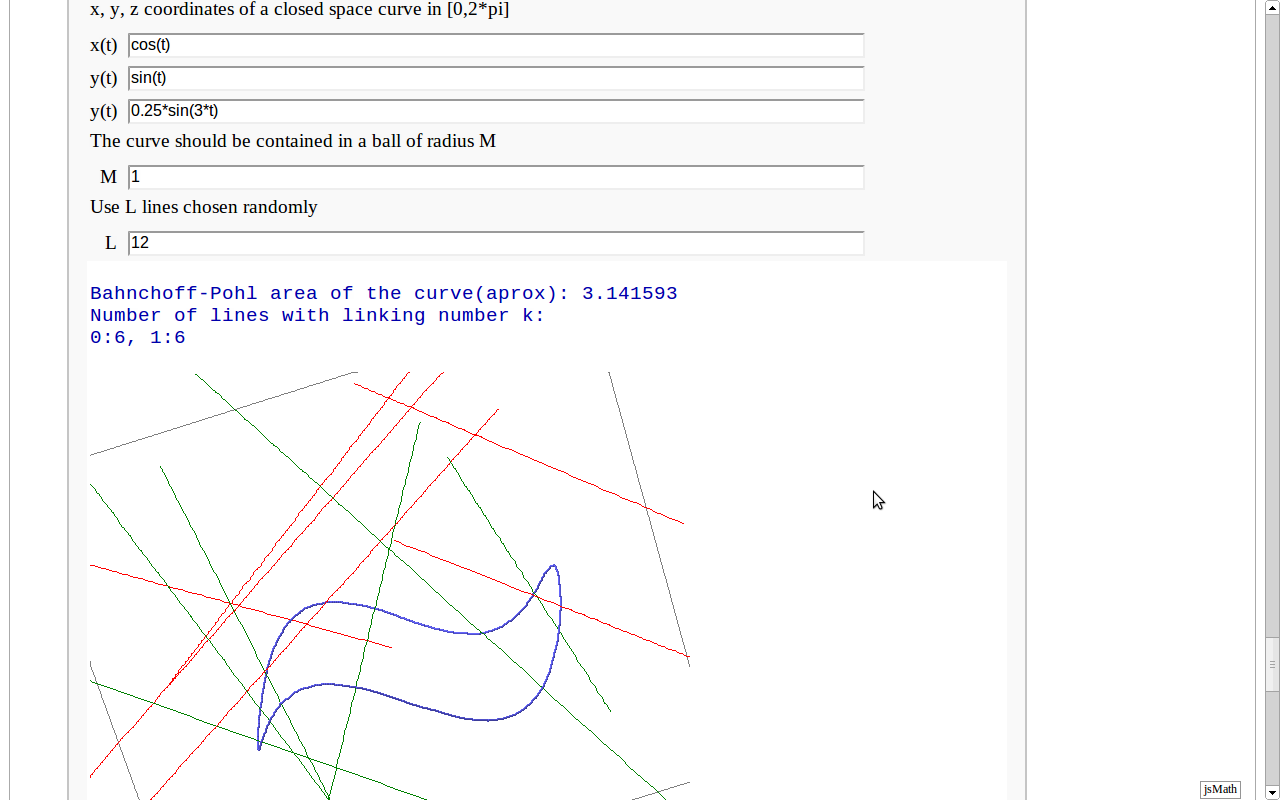|
Size: 18331
Comment: py3 print
|
← Revision 43 as of 2023-08-30 08:21:15 ⇥
Size: 18248
Comment: mini comment in Banchoff-Pohl
|
| Deletions are marked like this. | Additions are marked like this. |
| Line 89: | Line 89: |
This still looks as a good idea to me, so please read the original code at https://malabares.cancamusa.net/home/pub/14/ But the following is fixed so that there is only one interact, and sagecell works. There might be another way yto |
However, in the following there is only one interact, to make sagecell works. |
| Line 121: | Line 119: |
| Line 126: | Line 123: |
| Line 132: | Line 129: |
| Line 135: | Line 132: |
| Line 138: | Line 135: |
| ufunc = function('ufunc', t) vfunc = function('vfunc', t) dFtt = F(u=ufunc, v=vfunc).diff(t, t) ec1 = dFtt.dot_product(dFu(u=ufunc, v=vfunc)) ec2 = dFtt.dot_product(dFv(u=ufunc, v=vfunc)) |
ufunc = function('ufunc') vfunc = function('vfunc') dFtt = F(u=ufunc(t), v=vfunc(t)).diff(t, t) ec1 = dFtt.dot_product(dFu(u=ufunc(t), v=vfunc(t))) ec2 = dFtt.dot_product(dFv(u=ufunc(t), v=vfunc(t))) |
| Line 148: | Line 145: |
| diffec1 = ec1.subs_expr(diff(ufunc, t) == du, diff(ufunc, t, t) == ddu, diff(vfunc, t) == dv, diff(vfunc, t, t) == ddv, ufunc == u, vfunc == v) diffec2 = ec2.subs_expr(diff(ufunc, t) == du, diff(ufunc, t, t) == ddu, diff(vfunc, t) == dv, diff(vfunc, t, t) == ddv, ufunc == u, vfunc == v) |
diffec1 = ec1.substitute(diff(ufunc(t), t) == du, diff(ufunc(t), t, t) == ddu, diff(vfunc(t), t) == dv, diff(vfunc(t), t, t) == ddv, ufunc(t) == u, vfunc(t) == v) diffec2 = ec2.substitute(diff(ufunc(t), t) == du, diff(ufunc(t), t, t) == ddu, diff(vfunc(t), t) == dv, diff(vfunc(t), t, t) == ddv, ufunc(t) == u, vfunc(t) == v) |
| Line 160: | Line 157: |
| Line 163: | Line 160: |
| Line 166: | Line 163: |
| Line 170: | Line 167: |
| Line 173: | Line 170: |
| Point = map(float, Point) velocity = map(float, velocity) |
Point = list(map(float, Point)) velocity = list(map(float, velocity)) |
| Line 179: | Line 176: |
| Line 181: | Line 178: |
| Line 186: | Line 183: |
| Line 192: | Line 189: |
| Line 352: | Line 349: |
| print('A curve of lenght %f'%longitud((curvax, curvay), t0, t1)) | print('A curve of length %f'%longitud((curvax, curvay), t0, t1)) |
| Line 354: | Line 351: |
| cortes_tot = sum(k*v for k,v in cortesd.iteritems()) | cortes_tot = sum(k*v for k,v in cortesd.items()) |
| Line 360: | Line 357: |
| == Banchoff-Pohl area == by Pablo Angulo. Computes the Banchoff-Pohl "area enclosed by a spatial curve", by throwing some random lines and computing the linking number with the given curve. Lines not linked to the given curve are displayed in red, linked lines are displayed in green. |
== Banchoff-Pohl "area" == by Pablo Angulo. Approximates the Banchoff-Pohl "area enclosed by a spatial curve", by throwing some random lines and computing the linking number with the given curve. Lines not linked to the given curve are displayed in red, linked lines are displayed in green. |
| Line 413: | Line 410: |
| pp += parametric_plot3d(l1*v1+l2*v2+t*v,(t,-2,2), | # fix 30-08-23: coercion of (l1*v1+l2*v2) to SymbolicRing did not work pp += parametric_plot3d((1+0*t)*(l1*v1+l2*v2)+t*v,(t,-2,2), |
Sage Interactions - Geometry
goto interact main page
Contents
Intersecting tetrahedral reflections FIXME
by Marshall Hampton. Inspired by a question from Hans Schepker of Glass Geometry.
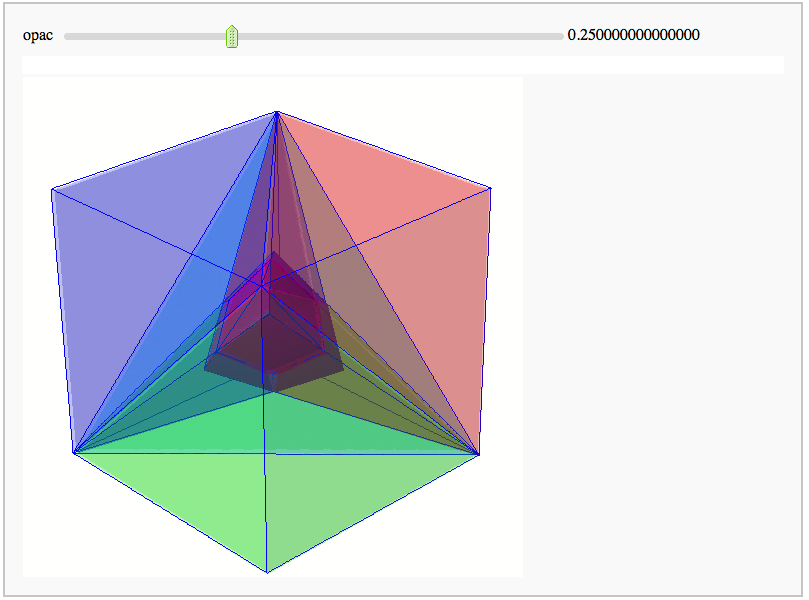
Evolutes
by Pablo Angulo. Computes the evolute of a plane curve given in parametric coordinates. The curve must be parametrized from the interval [0,2pi].
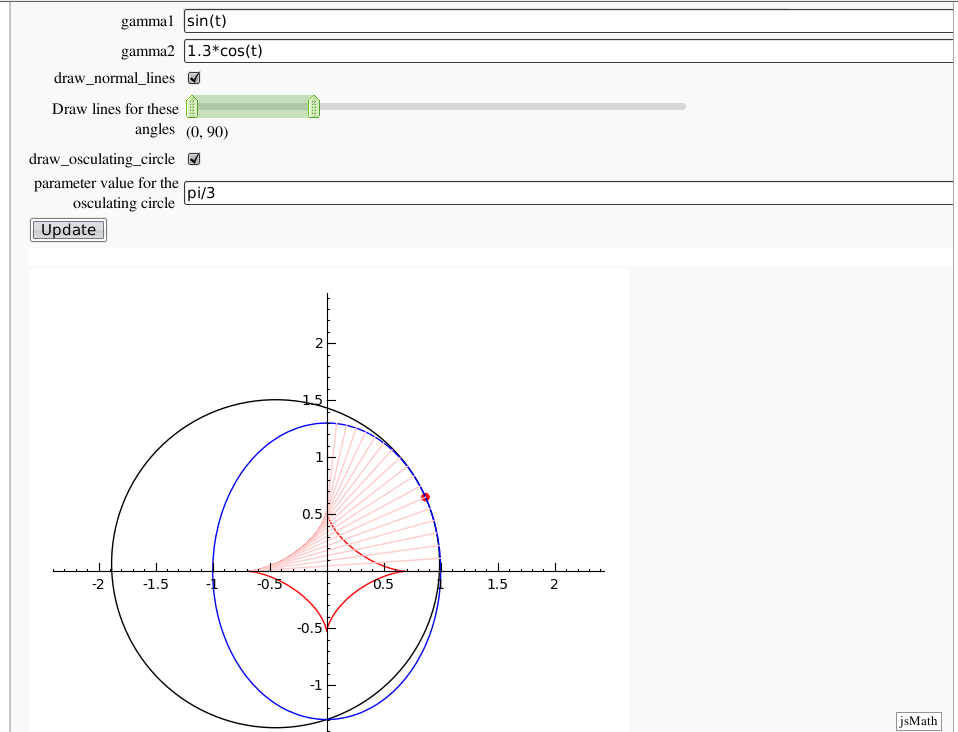
Geodesics on a parametric surface
by Antonio Valdés and Pablo Angulo. This example was originally composed of two interacts:
- - the first allowing the user to introduce a parametric surface, and draw it. - the second drawing a geodesic within the surface.
The separation was so that after the first interact, the geodesic equations were "compiled", thus making the second interact faster. However, in the following there is only one interact, to make sagecell works.
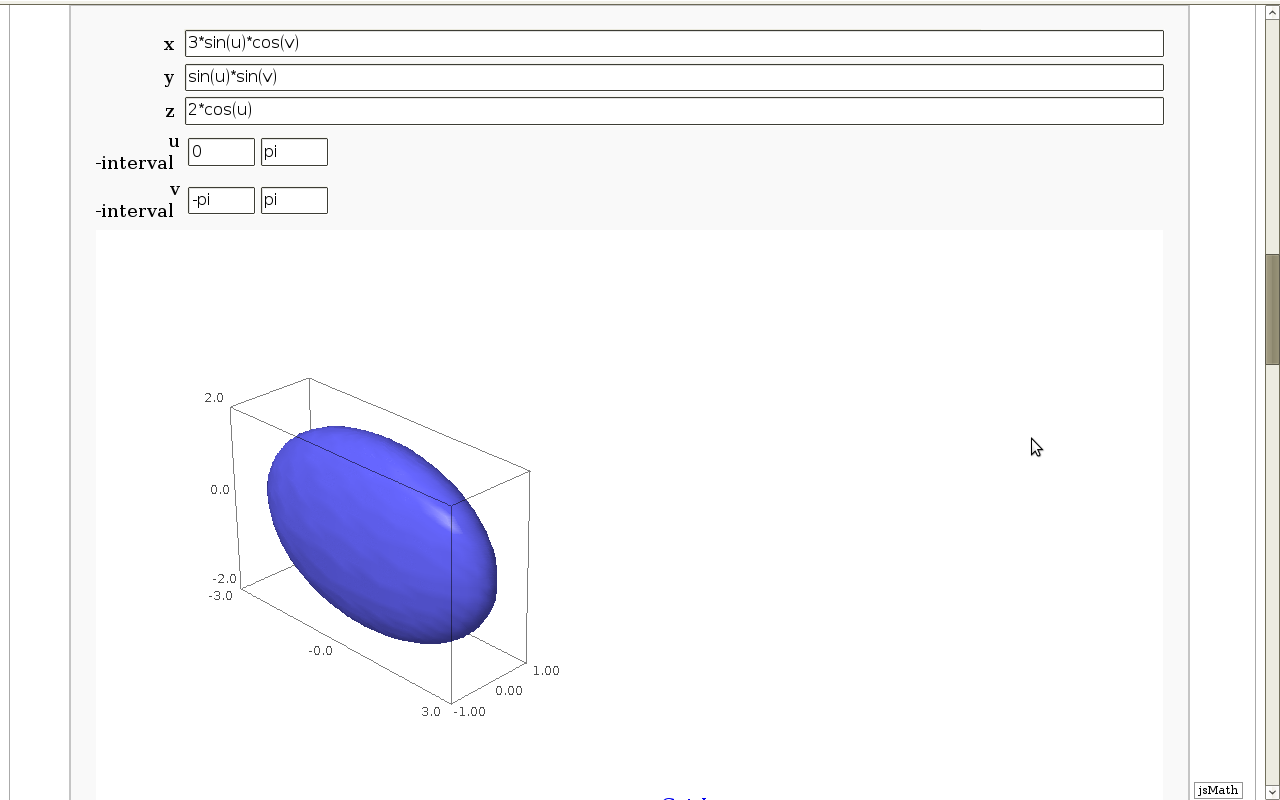
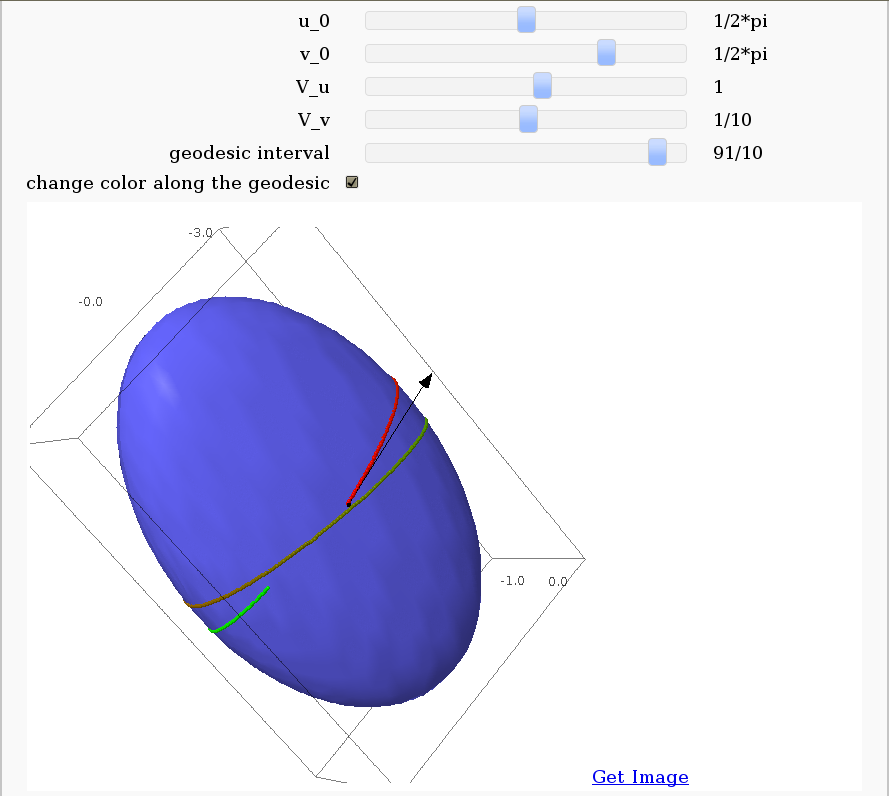
Dimensional Explorer
By Eviatar Bach
Renders 2D images (perspective or spring-layout) and 3D models of 0-10 dimensional hypercubes. It also displays number of edges and vertices.
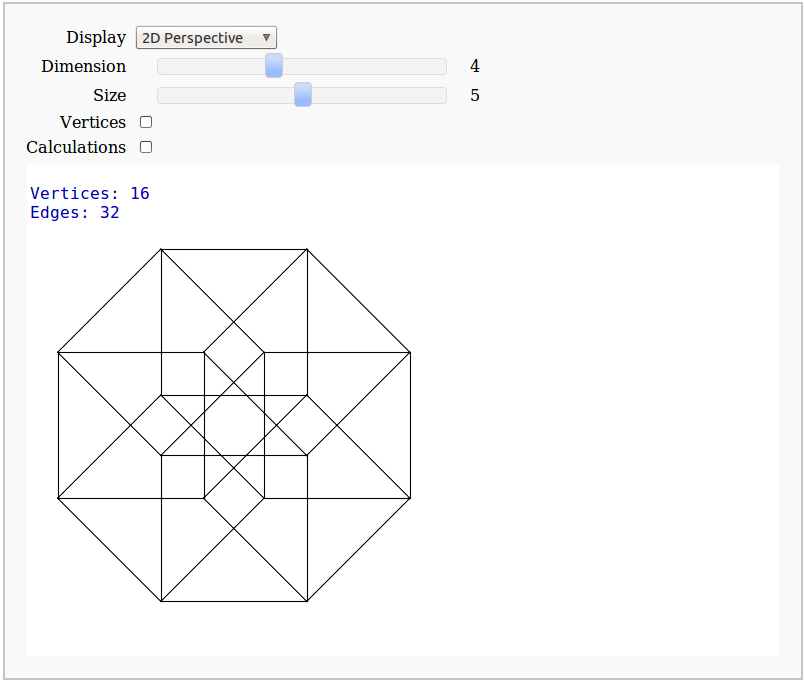
Crofton's formula
by Pablo Angulo. Illustrates Crofton's formula by throwing some random lines and computing the intersection number with a given curve. May use either solve for exact computation of the intersections, or may also approximate the curve by straight segments (this is the default).
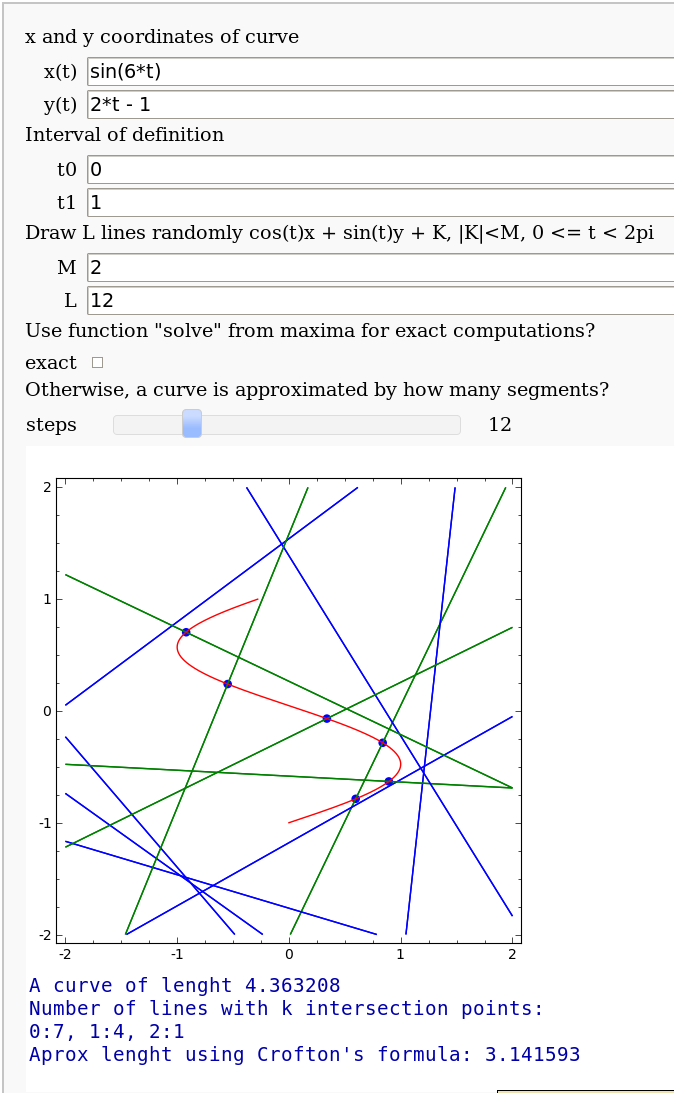
Banchoff-Pohl "area"
by Pablo Angulo. Approximates the Banchoff-Pohl "area enclosed by a spatial curve", by throwing some random lines and computing the linking number with the given curve. Lines not linked to the given curve are displayed in red, linked lines are displayed in green.
